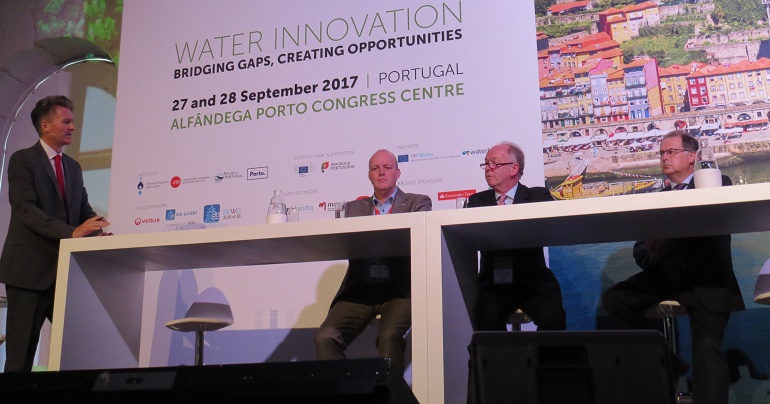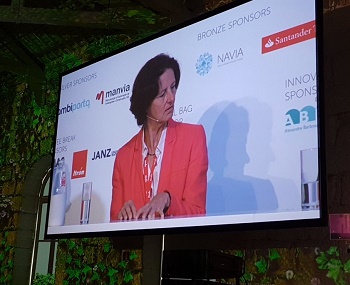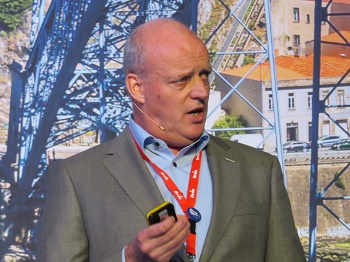Porto Water Innovation Week: Water cycle has different diameters
 ‘The water challenges are not the same everywhere. Every region is different’, remarked president Diane d’Arras of the International Water Association during one of the panel sessions of the 4th EIP Water Conference in Porto, Portugal.
‘The water challenges are not the same everywhere. Every region is different’, remarked president Diane d’Arras of the International Water Association during one of the panel sessions of the 4th EIP Water Conference in Porto, Portugal.
The conference focuses on water and the circular economy, two important issues of the EU policy. D'Arras brought an important nuance into the discussion by pointing out the different levels of the water cycle. She called it the different diameters.
EIP Water is one of the European Union’s five innovation partnerships. It aims to foster innovation in the European water sector and to help to mature and establish partnerships. This year the conference is part of the Porto Water Week that takes place from 24 to 30 September.
 IWA president Diane d’Arras called to differentiate the scale of the water cycles that is to be closed.
IWA president Diane d’Arras called to differentiate the scale of the water cycles that is to be closed.
Not one universal standard
Accordingly, D’Arras gave the example of the water use in the United States where the daily average is 300 liter per day, and in Europe only 110 liter. ‘Is it wise to introduce a minimum standard for both regions’, she asked herself. Nevertheless, she added that the reduction of water use firstly, remains as a principle worldwide.
Different circles
The regional insights brought D’Arras on the different levels of the water cycle. ‘We need to take in consideration the diameter of the circle’, the IWA-president said. ‘There are big differences in a water cycle in a house, a company, a utility or a country. To make this difference it is also important to work on water issues with stakeholders, such as consumers, farmers and energy producers.’
 General manager Arjan Boogaards of Nalco Water challanged the global industry to drop its water use by 50 percent.
General manager Arjan Boogaards of Nalco Water challanged the global industry to drop its water use by 50 percent.
Big data
General Manager EMEA, Arjan Boogaards at Nalco Water, gave an update on the use of big data to reduce the water use in the industry worldwide. As supplier of water treatment chemicals, his company has installed over 10,000 monitoring devises to monitor the water use at industrial sites. ‘We collect this data and use it as big data to create awareness’, Boogaards explained.
Monetizing water risks
Recently Microsoft joined this initiative to speed up the handling of all the data in a cloud platform and a pricing model. ‘By using our Ecolab water risk monetizer tool, companies can enter their water use data and this is translated in water scarcity risks. Specially for the company’s board room this risk assessment is produced in understandable financial terms’.
According to Boogaards the industry has reduced its water use by 10 percent. ‘With use of cloud-based big data, we can step-by-step further reduce the industrial water use’, he said. ‘By rethinking current industrial water use I think we should go for 50 percent’, Boogaards stated.
Read also on this website
• 3rd EIP Water conference: Start-ups and innovation is a difficult mix in a fragmented water sector, 11 February 2016
• 3rd EIP Water conference: Stronger public sector to lead water innovation for future markets, 10 February 2016
• Amsterdam International Water Week 2015: Water stewardship gets tough beyond perimeter of industrial site, 10 November 2015
More information
Porto Water Innovation Week
www.portowaterinnovationweek.eu
European Innovation Partnership (EIP) Water
www.eip-water.eu/porto-water-innovation-week
Ecolab water risk monetizer
www.waterriskmonetizer.com



